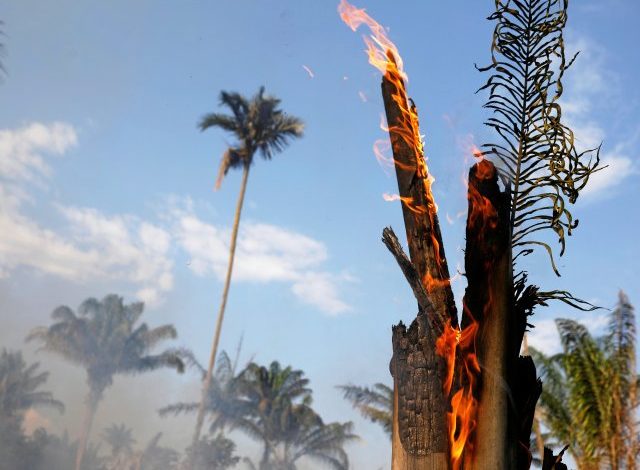Devestating news are spreading across the globe: the worst ever forest fires are raging in Brazil. More and more heads of state are worried. This is a crisis of international scale and the consequences of the disaster currently unpredictable. The rainforest works like an “air conditioning” for the Earth. If parts of it are destroyed, there are fewer trees to convert carbon dioxide into oxygen.
Not only in Brazil, but also in the neighboring Bolivia and Venezuela, tens of thousands of hectares are burning or have already been destroyed. Animals are burning alive. Heavy clouds of smoke cover the sky over São Paulo; the electricity broke down.
There are serious allegations being made – in one sense and the other – as to who instigated these fires and what their motives were. It is the time of slash-and-burn: farmers are setting fire in order to create arable and grazing land.
The cultivation of soy is a major driver of deforestation in the Amazon basin. Soybean seeds provide high protein animal feed for farm animals. In fact, 80% of Amazon soy is used for animal feed. Today, 24-25 million hectares of arable land in Brazil are dedicated to the growth of soy, making it the second largest soybean producer in the world, after the US. The continued demand for soy bean in the 1990s and early 2000s led to a dynamic deforestation of soybean pastures, replacing soy with existing cattle pasture and driving new deforestation for livestock into the Amazon.
Intensive criticism of deforestation due to the cultivation of soybean at the beginning of 2000 inspired international advocacy. Numerous studies show deforestation as a result of soybean transformation in the Amazon. Some even argue that US policy in favor of corn ethanol leads to increased soy prices and boosts soybean cultivation in the Amazon. The impact of soybean cultivation extends beyond the lost forest habitat: carbon emissions from deforestation contribute to global climate change. Soy uses large amounts of agrochemicals, causing water pollution in large waters such as the Xingu River.
The government at the time undertook measures to stop Brazilian soybean traders from buying soybeans from deforested farmland. Measures to monitor compliance were implemented and infringements were penalized with the refusal of bank credit to municipalities. But despite these restrictions, the production of soybean continued and even expanded into the Cerrado Zone in southern Brazil, as well as to northern Bolivia, Argentina and Paraguay.
The current Brazilian government is heavily criticized, both nationally and internationally, for its environmental policy and advocacy of deforestation.
We would like to remind, that microalgae such as Golden Chlorella are a true and sustainable alternative, as their cultivation does not require the same amount of arable land as other agricultural products. Microalgae are a natural marine resource and, because of their high protein content, relevant for several economically applications, including animal feed. But, of course, reducing the consumption of meat and animal produce altogether, adopting a vegetarian or vegan diet combined with a mindful, sustainable lifestyle at scale would contribute to the worldwide efforts made to preserve the planet.

“Microalgae are classified into diatoms (Bacillariophyceae), green algae (Chlorophyceae), golden algae (Chrysophyceae) and blue-green algae cyanobacteria (Cyanophyceae). Microalgae are mainly composed by proteins, carbohydrates, lipids, vitamins, minerals and bioactive compounds, such as carotenoids. This variable nutrient composition depends on species, strain and algae growing conditions. Research evidence so far has shown that the inclusion of microalgae in animal diets could improve growth and meat quality in ruminants, pigs, poultry and rabbits.
The use of microalgae as feed ingredients is very promising as an alternative to corn and soybean, thus mitigating the current competition among food-feed-biofuel industries. In addition, microalgae contribute for the protection of environment and natural resources, namely land degradation and water deprivation. Microalgae also provide a sustainable alternative for n-3 LCPUFA availability, thus protecting worldwide fatty fish stocks.” www.sciencedirect.com, © 2017 Elsevier B.V. All rights reserved.
International protein expert and Alver Founder & CEO Mine Uran talking about algae as future food.

We will continue to research vegan protein sources and develop plantbased foods as a contribution to the global effort of enhancing animal welfare and preserving the environment.
#actfortheamazon #prayforamazonas #PrayForAmazonia #RezaPorLaAmazonía
Sources:
https://globalforestatlas.yale.edu/amazon/land-use/soy
https://www.sciencedirect.com/science/article/abs/pii/S1871141317302858
Slider image: © Reuters, Bruno Kelly








